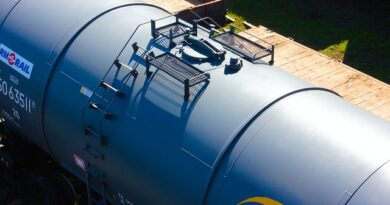Regional Rapid Transit System (RRTS)
Context:
Recently, the officials of Regional Rapid Transit System (RRTS) estimated that RRTS will reduce CO2 emissions by taking around 1.5 lakh private vehicles off the road.
Contents
What is Regional Rapid Transit System?
- RRTS is a new, dedicated, high speed, high capacity, comfortable commuter service connecting regional nodes in NCR.
- RRTS is different from conventional Railway as it will provide reliable, high frequency, point to point regional travel at high speed along dedicated path way.
- RRTS is different from metro as it caters to passengers looking to travel relatively longer distance with fewer stops and at higher speed
Background
The Planning Commission formed a Task Force in 2005 under the Chairmanship of Secretary, Ministry of Urban Development (MoUD) to develop a multi modal transit system for Delhi National Capital Region (NCR). This was included in the Integrated Transport Plan for NCR 2032 with special emphasis on Regional Rapid Transit System (RRTS) connecting regional centres.
The Task Force identified 8 corridors and prioritised three corridors namely Delhi-Meerut, Delhi-Panipat and Delhi- Alwar for implementation. In Mar 2010, National Capital Region Planning Board(NCRPB) appointed M/s. Delhi Integrated Multi-Modal Transit System for Delhi-Meerut and Delhi-Panipat and M/s. Urban Mass Transit Company Limited for Delhi-Alwar to carry out feasibility study and prepare the Detailed Project Report.
About the RRTS train
- The Delhi–Meerut RRTS is an 82.15 km long, under-construction, semi-high speed rail corridor connecting Delhi-Ghaziabad-Meerut.
- It is one of the three rapid-rail corridors planned under Phase-I of Regional Rapid Transport System (RRTS) project of National Capital Region Transport Corporation (NCRTC).
- With a maximum speed of 160 km/h (99.42 mph), the distance between Delhi and Meerut will be covered in around 62 min (1.03 h).
- With radiating stainless steel outer body, these aerodynamic RRTS trains will be lightweight and fully air-conditioned.
- Each car will have six automatic plug-in type wide doors, three on each side for ease of access and exit.
Benefits:
- Environment Friendly: The corridor is estimated to reduce 2.5 lakh CO2 tonnes/year of total annual greenhouse gas emissions, making the city a cleaner and a much better place to live.
- Economic Development: It is estimated to increase the share of public transportation usage along the corridor from 37% to 63%.
- High-speed connectivity will result in balanced economic development across the region, leading to economic benefits to all strata of society and many nodes of development rather than all economic activity happening at one place.
- Sustainable Urbanization: The project will serve as a demonstration for developing high-capacity rapid urban transit corridors in other urban areas of India.
- It will help in reducing traffic congestion and total emissions from the transport sector in NCR.
EXECUTION
- The project is proposed to be undertaken by aSpecial Purpose Vehicle (SPV) namely the National Capital Region Transport Corporation (NCRTC)as a joint ownership of the Centre and State Governmentswith equal contribution, loan from multilateral/bilateral agency through the Department of Economic Affairs (DEA)/Ministry of Finance (MoF).
- Phillipines-based Asian Development Bank (ADB) has approved $1 billion loan for construction of the modern, high-speed Delhi-Meerut Regional Rapid Transit System (RRTS) in India.
- The Asian Development Bank (ADB) is a regional development bank established on 19 December 1966, which is headquartered in the city of Mandaluyong, Metro Manila, Philippines.
- The financing for the project will be implemented in four tranches between August 2020 and May 2025.
- The government will provide $1.89 billion and co-financiers are expected to provide $1 billion of the total project cost of $3.94 billion, an official statement said
ADDITIONAL $3 MILLIONGRANT
- A $3 million grant from ADB’s Japan Fund for Poverty Reduction will support various activities, including provision of visual, hearing and mobility aids, such as wheelchairs for differently abled persons.
- Training for women and differently abled on safe mobility and employment opportunities and behavioralchange for public transport providers will also be given, it said.
- An Inclusive Project
Source: Indian Express
You can find many articles on INFRASTRUCTURE (part of GS III) in our website. Go through these articles share with your friends and post your views in comment section.
Discover more from Simplified UPSC
Subscribe to get the latest posts sent to your email.



